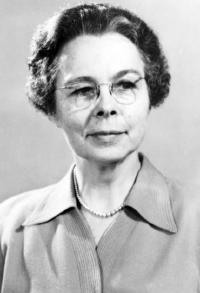Katharine Burr Blodgett
Newnham College, Cambridge University (Ph.D.)
Physics
1926
material science, surface chemistry
Material Science, Condensed Matter Physics, Quantum Optics, Photonics, Advanced Laboratory Techniques, Nanotechnology
https://en.wikipedia.org/wiki/Katharine_Burr_Blodgett
UGUD , G
Scientist Biography
Biographical information
Katharine Burr Blodgett was born in Schenectady, NY, in 1898. Her father was a patent clerk for General Electric and friends with Irving Langmuir. Langmuir encouraged Blodgett to pursue physics and chemistry, and after she had earned her master's degree, she worked at GE as Langmuir’s assistant. She later went back to school at the University of Cambridge to get her Ph.D. in physics, working in the Ernest Rutherford lab. She became the first woman to earn a Ph.D. in Physics from Cambridge.
Relevant Concepts
Anti-reflective coatings, Langmuir-Blodgett filmsResearch Areas:
material science, surface chemistryRelevant Courses:
Material Science, Condensed Matter Physics, Quantum Optics, Photonics, Advanced Laboratory Techniques, NanotechnologyKey Contributions
Blodgett's research contributed to the understanding of molecular films and their properties, paving the way for advancements in materials science and surface engineering. Her work has influenced the development of new materials with tailored surface characteristics.
Working with Irving Langmuir, Blodgett developed a method to create and apply ultra-thin films one molecule thick, which could be layered to achieve desired properties. This technique is used in various scientific and industrial applications, including sensors, coatings, and nanotechnology.
Blodgett developed a process for creating nonreflective glass by applying a single-molecule coating, which reduced glare and reflections. This innovation had significant applications in improving the clarity of optical instruments, picture frames, and cinema projectors.
